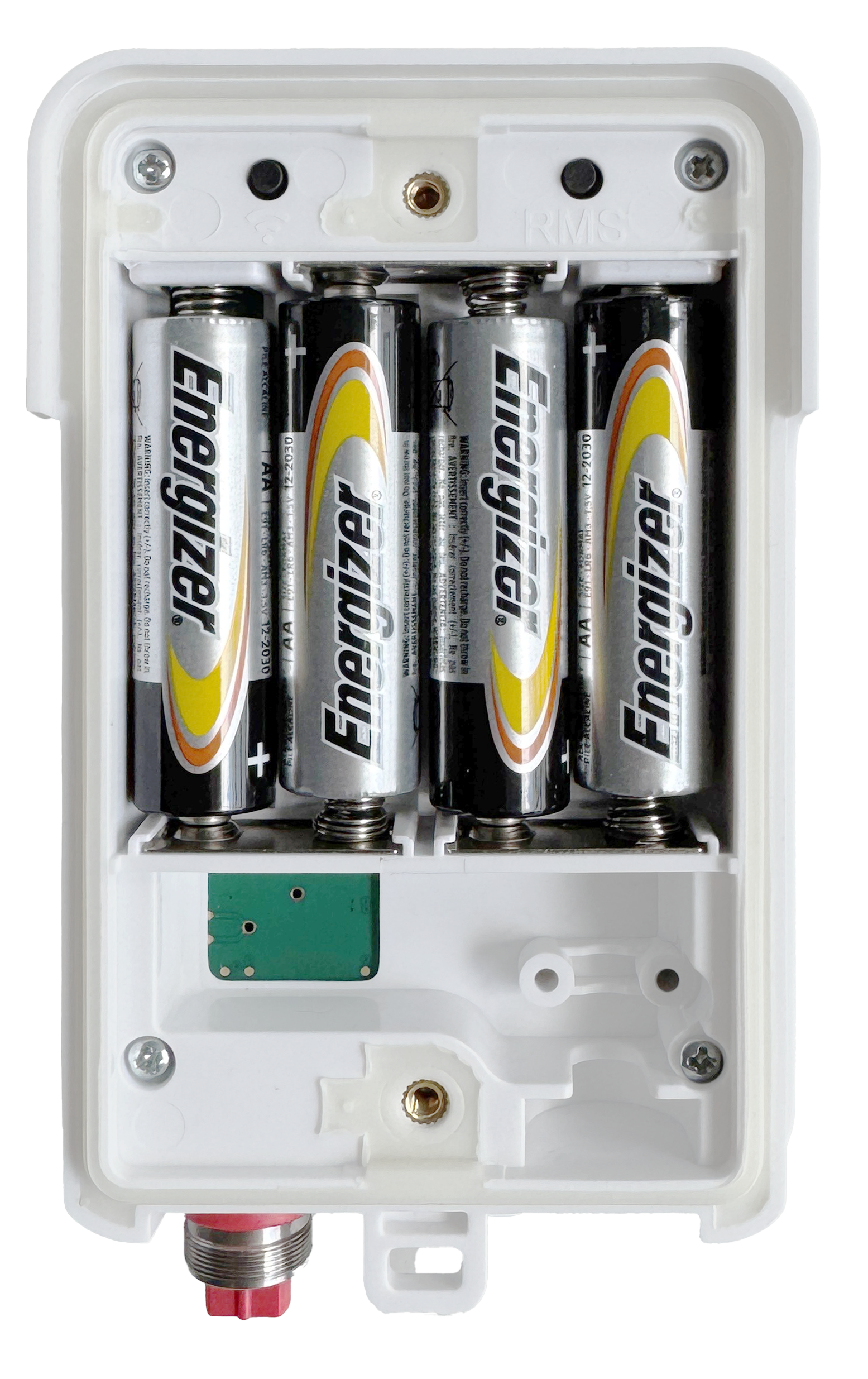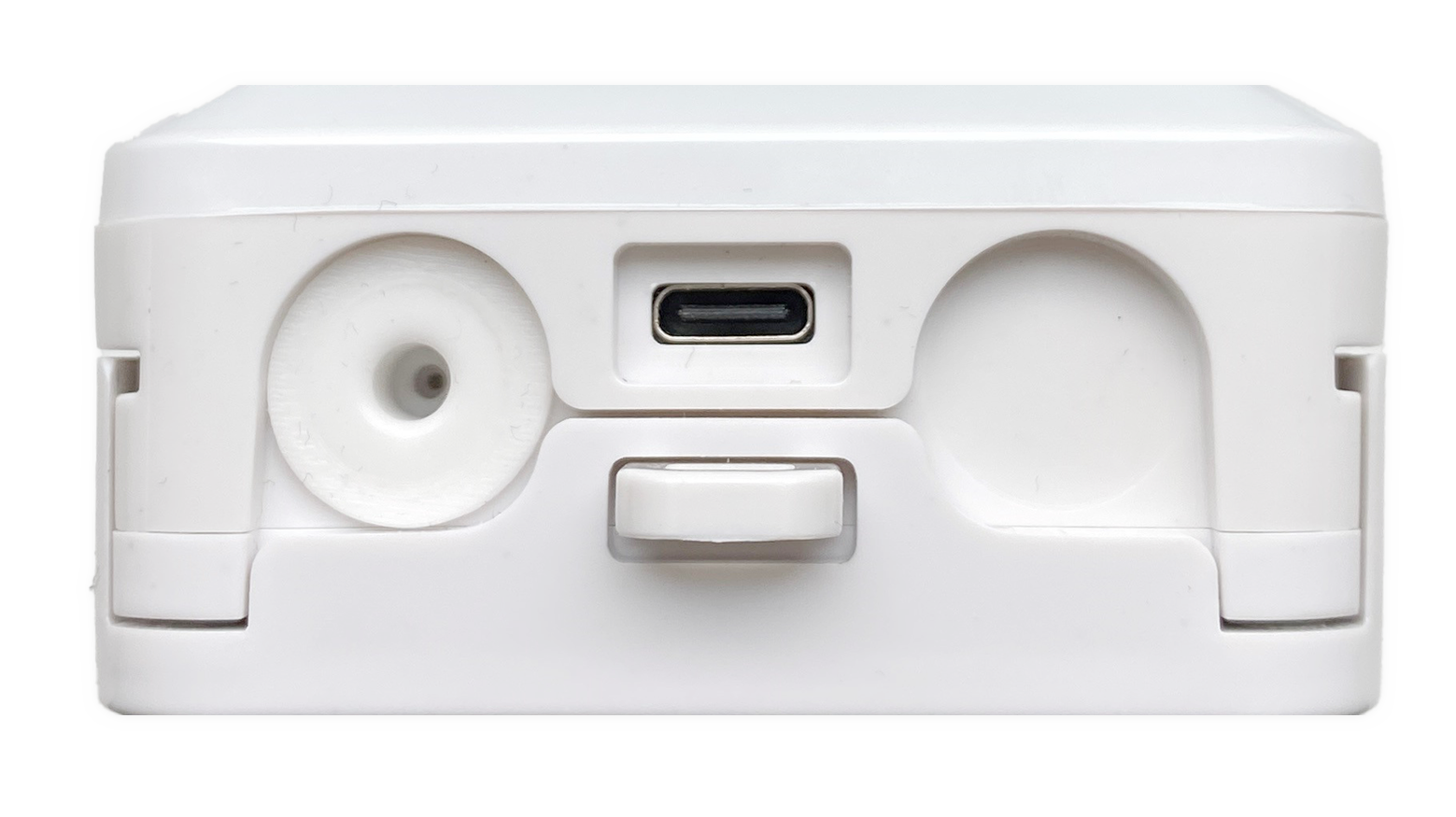Power supply
This section provides detailed instructions on correctly connecting the device to power sources and other essential components. It outlines both available power options: USB-C and battery. Following these steps carefully is crucial to ensuring the device operates safely and reliably.
Power supply via battery
Use 4 commercially available 1.5V AA batteries, alkaline or lithium based. Recommended are Energizer L91 AA Ultimate Lithium 1.5 Volt*.
*Batteries are not supplied with the device.
|
 |
|---|
Power supply via USB-C
Use power supply with 5V only, no data is transmitted via the USB-C connection. |
 |
|---|
Battery monitoring
If the logger is used with batteries, the battery status is monitored and shown on the device display with a 3 segment battery symbol.
0 of 3 segments means battery >10% remaining battery capacity. The battery status is also transmitted to the RMS-SW. The battery percentage is displayed numeric.
The battery monitoring is carried out once per hour.
The logger can recognize whether a alkaline or a lithium battery is used. Rotronic recommends the use of Energizer L91 AA Ultimate Lithium 1.5 Volt (3000mAh). The battery monitoring for lithium is designed for this battery type. The battery capacity of alkaline batteries is monitored by simple voltage measurement.
The logger can also be powered by USB-C (see below). If USB-C and batteries are used, the logger will be supplied by the USB-C cable. The logger still monitors the battery to indicate battery aging. In case of USB-C power interruption, the batteries are the power backup and takeover without interruption. On the device display, there is no battery symbol shown.
If USB-C is used to power the logger (without battery), the battery status in the RMS-SW is "---". On the device display, there is no battery symbol shown. In case of power interruption of the USB-C power supply, the logger turns off immediately. The logger does not have a time stamp anymore and does not continue to log data. A data gap is created. After the power is coming back, the device synchronizes with the server time and continues logging.
Energy consumption
Battery life time
Battery |
Probe |
Log Interval 1min. |
Log Interval 5min. |
Log Interval 15min. |
|---|---|---|---|---|
Energizer L91 AA Ultimate Lithium 1.5V (3000mAh) |
HCD-S |
> 1 year |
> 3 years |
> 5 years |
Alcaline AA 1.5V (2500mAh) |
HCD-S |
app. 10 month |
> 2.5years |
> 3 years |
Energizer L91 AA Ultimate Lithium 1.5V (3000mAh) |
HCD-IC |
app. 3 month |
> 1 year |
> 3 years |
Alcaline AA 1.5V (2500mAh) |
HCD-IC |
app. 2 month |
> 10 month |
> 2 years |
Energizer L91 AA Ultimate Lithium 1.5V (3000mAh) |
TCD-S |
app. 3 month |
> 1 year |
> 3 years |
Alcaline AA 1.5V (2500mAh) |
TCD-S |
app. 2 month |
> 10 month |
> 2 years |
Energizer L91 AA Ultimate Lithium 1.5V (3000mAh) |
PCD-M |
app. 1 year |
> 3 years |
> 5 years |
Alcaline AA 1.5V (2500mAh) |
PCD-M |
app. 9 month |
> 2 years |
> 3.5 years |
Energizer L91 AA Ultimate Lithium 1.5V (3000mAh) |
PCD-L |
app. 10 month |
> 2.5 years |
> 4.5 years |
Alcaline AA 1.5V (2500mAh) |
PCD-L |
app. 6 month |
app. 2 years |
> 3 years |
Ext. power only! Not for battery power designed |
CCD |
N/A |
N/A |
N/A |
Note: The battery life time is an estimation. It varies if •Batteries are aged (older production date) •Ambient temperature differs strongly from 23°C, especially for low temperatures. •Signal strength of the WiFi connection to the access point (router) is low. |
Current consumption when USB-C powered
Topic |
Description |
|---|---|
Current consumption |
app. 30-60mA AVG at 5V when logger is active The current depends on the connected probe.
|
Connection to the digital probe
Topic |
Description |
|---|---|
E2 connection |
The E2 connection is a Rotronic standardized 7 pin connector. It is used for all digital RMS probes, RMS loggers for digital probes and accessory cables. Please see the chapter Housing for the connection of the digital probe. |
Updated: 28.05.2025